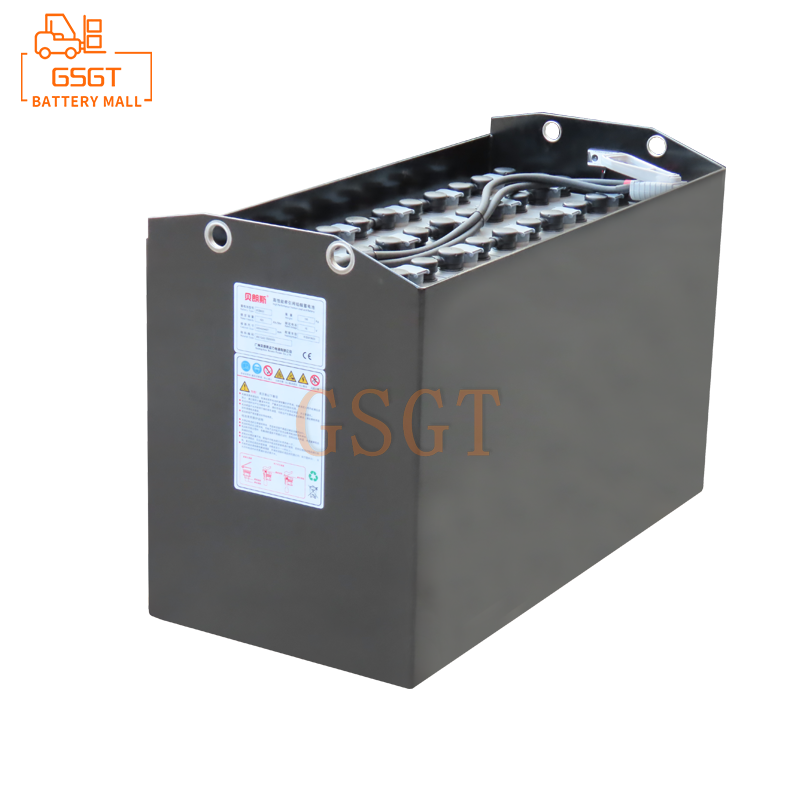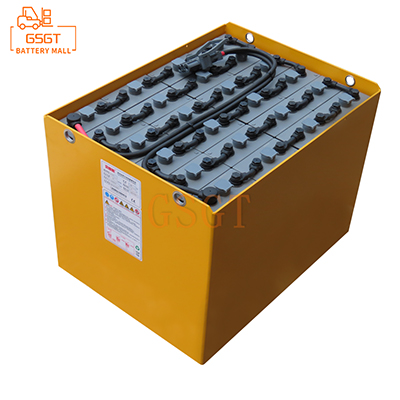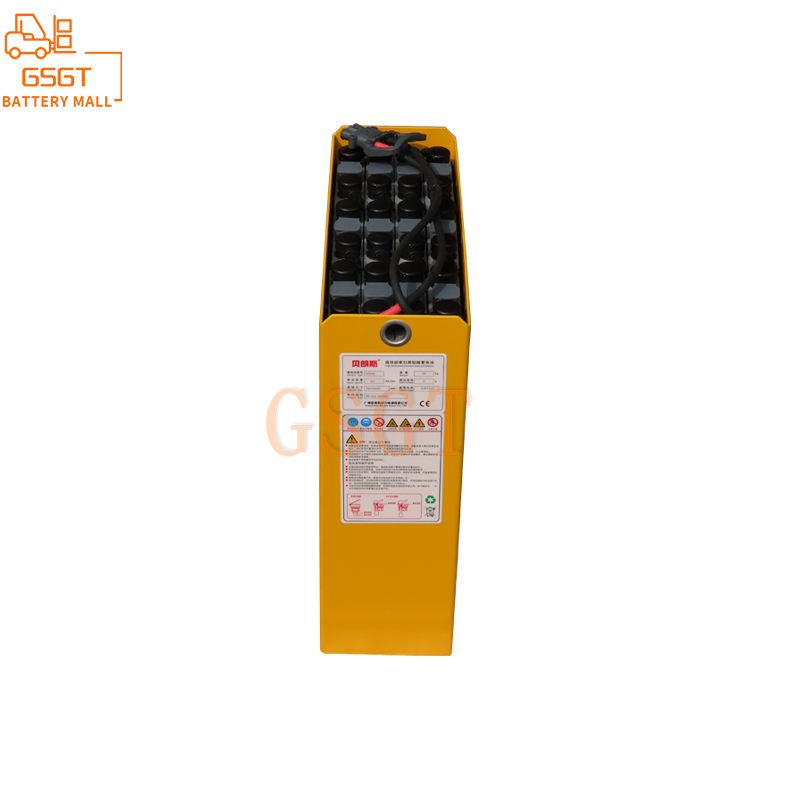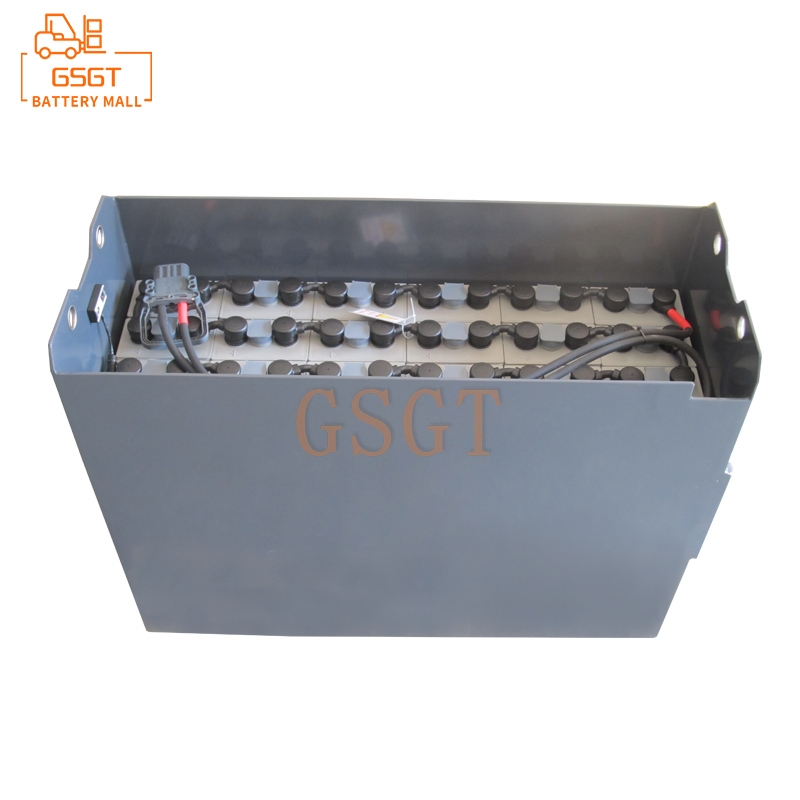Time:2025-04-21 09:09:31
Browse:526
Abstract
This article conducts an in-depth analysis of the influencing factors of the lifespan of lead-acid batteries in forklifts, covering multiple key dimensions such as charging, discharging, usage environment, and maintenance. By systematically expounding the mechanism of action of various factors on the battery life, it provides comprehensive and practical references for forklift users and maintenance personnel, helping to extend the service life of lead-acid batteries, reduce usage costs, and improve the operational efficiency and safety of forklifts.
1. Introduction
Forklifts, as indispensable handling equipment in modern logistics, warehousing and industrial production, are mostly powered by lead-acid batteries. Lead-acid batteries have the advantages of mature technology, low cost and good high-current discharge performance, and are widely used in the forklift field. However, the service life of lead-acid batteries is not fixed and is affected by a combination of multiple factors. If these influencing factors are not correctly recognized and handled, the lifespan of the battery will be significantly shortened, not only increasing the usage cost but also possibly affecting the normal operation of the forklift, leading to a decline in production efficiency. Therefore, it is of great practical significance to deeply analyze the influencing factors of the lifespan of lead-acid batteries in forklifts.
2. The Impact of Charging Factors on Battery Life
(1) Charging Voltage
Charging voltage is one of the key factors affecting the lifespan of lead-acid batteries. When the charging voltage is too high, it will cause overcharging inside the battery. Overcharging will cause the active substances on the positive plate to soften and fall off, while generating a large amount of heat and gas. Heat can accelerate the aging and corrosion of the materials inside the battery. The generation of gas can increase the internal pressure of the battery. In severe cases, it may cause the battery casing to swell or even crack. On the contrary, if the charging voltage is too low, it will lead to insufficient battery charging. The active substances on the plates cannot be fully restored, and they will remain in a state of undercharge for a long time. This will cause sulfation of the plates, reduce the battery's capacity and charging and discharging performance, and also shorten the battery's lifespan.
(2) Charging Current
The magnitude of the charging current also has a significant impact on the lifespan of the battery. Although high-current charging can shorten the charging time, it will cause a significant impact on the battery. Excessive charging current will intensify the heating inside the battery, accelerate the speed of chemical reactions within the battery, and lead to excessive consumption of active substances and deformation of the plates. At the same time, high-current charging will also increase the amount of gas produced inside the battery and disrupt the chemical balance within the battery. Generally speaking, the charging current of lead-acid batteries should be controlled between 0.1C and 0.2C (C is the rated capacity of the battery), which is more appropriate. If the charging current exceeds 0.3C, long-term use will significantly reduce the battery's service life. Although charging with a small current is relatively gentle on the battery, if the charging time is too long, it will also cause the battery plates to become passivated, affecting the battery's performance.
(3) Charging Time
Reasonable charging time is an important condition for ensuring the normal service life of lead-acid batteries. Overcharging can cause the battery to heat up, lose water and age the active substances. Insufficient charging time, on the other hand, will prevent the battery capacity from being fully restored. Long-term accumulation will lead to a decline in battery performance. Generally, the charging time of forklift lead-acid batteries should be determined based on factors such as battery capacity, depth of discharge and charging current. Under normal circumstances, when the battery discharge depth reaches about 80%, the charging time is approximately 8 to 10 hours. However, in actual use, due to the differences in working environments and usage frequencies, the charging time needs to be flexibly adjusted to avoid overcharging or undercharging.
3. The Impact of Discharge Factors on Battery Life
(1) Depth of Discharge
The depth of discharge refers to the percentage of a battery's discharge capacity to its rated capacity. The depth of discharge of lead-acid batteries is closely related to their lifespan. The deeper the discharge depth, the shorter the cycle life of the battery. When a battery is over-discharged, the active substances on the plates will undergo irreversible changes, forming lead sulfate crystals, which leads to sulfation of the plates. After vulcanization, the resistance of the plates increases, the charging and discharging efficiency decreases, and the battery capacity will gradually decline.
(2) Discharge Current
The magnitude of the discharge current also affects the lifespan of lead-acid batteries. High current discharge will accelerate the chemical reaction rate inside the battery, intensify the consumption of active substances on the plates, and at the same time generate a significant voltage drop, causing the battery to heat up. Long-term high-current discharge will damage the structure of the plates, cause the active material to fall off, and reduce the capacity and lifespan of the battery. For instance, when a forklift is climbing a slope fully loaded or starting rapidly, the instantaneous discharge current is relatively large. If such operations are carried out frequently, it will cause significant damage to the battery. Although low-current discharge causes relatively less damage to the battery, if the discharge time is too long, it will also lead to sulfation of the battery plates, affecting the battery performance. Therefore, during the operation of forklifts, frequent high-current discharges should be avoided as much as possible, and the traveling speed and load weight should be reasonably controlled.
(3) Discharge temperature
Temperature has a significant impact on the discharge performance and lifespan of lead-acid batteries. In a low-temperature environment, the viscosity of the electrolyte inside the battery increases, and the ion migration speed slows down, resulting in an increase in the battery's internal resistance and a decrease in its discharge capacity. At the same time, low temperatures will also slow down the chemical reaction rate of batteries and reduce the utilization rate of active substances. Long-term discharge at low temperatures will accelerate the sulfation of battery plates and shorten the battery life. On the contrary, in a high-temperature environment, although the chemical reaction rate of the battery increases, it will accelerate the evaporation of moisture inside the battery and the aging of active substances, which will also have an adverse effect on the battery's lifespan. Generally speaking, the optimal discharge temperature for lead-acid batteries is around 25℃. Discharging in an environment below -10 ℃ or above 40℃ will significantly reduce the battery's service life.
4. The Impact of Usage Environment Factors on Battery Life
(1) Temperature
In addition to its impact on discharge performance, environmental temperature also has multiple effects on the lifespan of lead-acid batteries. In high-temperature environments, the chemical reaction rate inside the battery accelerates, the self-discharge rate increases, and the evaporation rate of the electrolyte speeds up, which can lead to severe water loss in the battery and require more frequent replenishment of distilled water. At the same time, high temperatures will also accelerate the aging and corrosion of battery plates and separators, reducing the performance and lifespan of the battery. In a low-temperature environment, the battery's charging acceptance capacity decreases, the charging efficiency drops, and it is necessary to appropriately extend the charging time. Moreover, low temperatures can make the battery plates more prone to sulfation. Therefore, in order to extend the lifespan of lead-acid batteries, forklifts and batteries should be placed in an environment with a relatively suitable temperature as much as possible. When the ambient temperature is too high or too low, corresponding cooling or insulation measures can be taken.
(2) Humidity
Environmental humidity also has a certain impact on the lifespan of lead-acid batteries. In a humid environment, the battery casing and terminal blocks are prone to moisture, which can lead to a decline in surface insulation performance and may cause leakage. At the same time, a humid environment will also accelerate the corrosion of the battery casing and metal components, affecting the safety and service life of the battery. Therefore, the storage and usage environment of the battery should be kept dry, and forklifts should not be parked or charged for a long time in damp places.
(3) Dust and impurities
Dust and impurities entering the battery interior can cause damage to the battery's performance and lifespan. Dust may adhere to the surface of the plates, affecting the charging and discharging reactions of the plates and increasing the internal resistance of the battery. If impurities enter the electrolyte, they may undergo chemical reactions with the electrolyte, altering its composition and properties, and causing an imbalance in the internal chemical balance of the battery. In addition, dust and impurities may also clog the exhaust holes of the battery, preventing the gas produced inside the battery from being discharged, increasing the internal pressure of the battery and posing a safety hazard. Therefore, it is necessary to clean the battery regularly to keep the battery surface and the surrounding environment clean.
5. The Impact of Maintenance Factors on Battery Life
(1) Inspection and replenishment of electrolyte
The electrolyte is an important medium for chemical reactions to occur inside lead-acid batteries. Its density and liquid level are crucial to the performance and lifespan of the battery. Regularly checking the density and liquid level of the electrolyte is a key link in maintenance and upkeep. Both excessively high and low electrolyte density can affect the charging and discharging performance of the battery. Generally speaking, the electrolyte density should be maintained at 1.28g/cm³ (at 25℃). When the electrolyte level is too low, the plates will be exposed above the liquid surface, causing sulfation and oxidation of the plates. Therefore, it is necessary to replenish distilled water or special lead-acid battery replenishment fluid in a timely manner. However, it should be noted that sulfuric acid or other liquids containing impurities must not be added, as this may affect the composition of the electrolyte and the performance of the battery.
(2) Battery surface cleaning
Keeping the battery surface clean can prevent the occurrence of leakage and short circuit on the battery surface. Dust on the battery surface and residual electrolyte can form conductive paths on the battery surface, increasing the battery's self-discharge and reducing its capacity and lifespan. Therefore, the surface of the battery should be wiped with a damp cloth regularly to remove dust and residual electrolyte. At the same time, it is necessary to check whether there is any corrosion on the battery terminal blocks. If corrosion is found, it should be promptly sanded with sandpaper and coated with anti-rust agents such as Vaseline to ensure good contact of the terminal blocks.
(3) Regular deep discharge and equalization charging
Regular deep discharge and equalization charging can help extend the lifespan of lead-acid batteries. Deep discharge can activate the active substances on the plates and reduce the occurrence of plate sulfation. It is generally recommended to perform a deep discharge every 2 to 3 months, that is, to lower the battery level before fully charging it. Equalization charging is to keep the voltage and capacity of each individual battery in the battery pack consistent, avoiding overcharging or undercharging of individual batteries. For forklift lead-acid battery packs used in series, equalization charging should be carried out regularly, usually 1-2 times a month.
(4) Storage Management
If a forklift is not used for a long time, the storage and management of lead-acid batteries are also very important. Before storage, the battery should be fully charged and then recharged every 1 to 2 weeks to prevent it from being discharged due to self-discharge. At the same time, the battery should be stored in a dry, well-ventilated and cool environment, avoiding direct sunlight and high-temperature and humid conditions. In addition, during storage, the battery voltage and electrolyte level should be checked regularly, and maintenance and care should be carried out in a timely manner.
6. The Impact of Other Factors on Battery Life
(1) Battery Quality
The quality of lead-acid batteries is the fundamental factor determining their lifespan. High-quality batteries employ superior plate materials, electrolytes and manufacturing processes, offering superior performance and a longer service life. Poor-quality batteries, on the other hand, have insufficient active material content and low purity on the plates, poor corrosion resistance and air permeability of the separators, and unstable composition of the electrolyte. All these can lead to various problems during battery use and significantly shorten its lifespan. Therefore, when purchasing lead-acid batteries for forklifts, one should choose well-known brands and reputable manufacturers to ensure the quality of the batteries.
(2) Frequency of Use
The usage frequency of forklifts can also affect the lifespan of lead-acid batteries. Frequent use of forklifts will lead to an increase in the number of battery charge and discharge cycles, accelerating the consumption of active substances inside the battery and the aging of the plates. If reasonable charging and discharging as well as maintenance are not paid attention to during use, the battery's lifespan will decline more rapidly. On the contrary, for forklifts with lower usage frequency, if they are not properly stored and managed, and the batteries remain idle for a long time, problems such as self-discharge and sulfation of the plates may also occur, which will affect the battery life. Therefore, whether forklifts are frequently or infrequently used, corresponding maintenance measures need to be taken based on the actual situation to extend the battery life.
7. Conclusion
The lifespan of lead-acid batteries in forklifts is comprehensively influenced by various factors such as charging, discharging, usage environment, and maintenance. Voltage, current and time during the charging process, depth, current and temperature during the discharging process, temperature, humidity, dust and impurities in the usage environment, as well as electrolyte management, surface cleaning, regular deep discharge and equalization charging, storage management and other maintenance and care, as well as battery quality, usage frequency, vehicle electrical system condition and other factors All of them affect the performance and lifespan of the battery to varying degrees. Only by fully understanding and correctly handling these influencing factors, and adopting scientific and reasonable usage and maintenance methods, can the service life of forklift lead-acid batteries be effectively prolonged, the usage cost be reduced, the operational efficiency and safety of forklifts be improved, and reliable power support be provided for the production and logistics operations of enterprises. In practical applications, forklift users and maintenance personnel should formulate personalized battery management plans based on specific circumstances, constantly summarize experiences, and ensure that lead-acid batteries are always in good working condition.

$2450

$3405

$1270

$2040

MESSAGE
Professional And Efficient
Security
Affordable Price
Professional Services